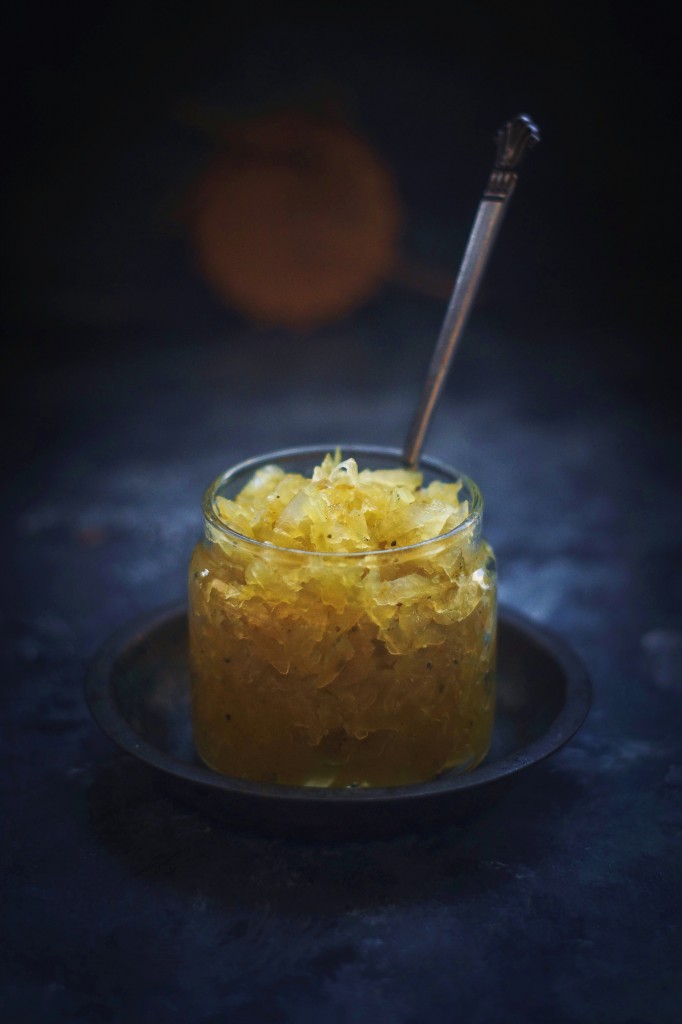
This recipe has to be one of the most loved recipes of my ma. It brings in intense nostalgia for me: an eclectic amalgam of memories that are sweet and funny…but also the close association of the people and places that matter most to me.
A jar full to treasure and the story of a mundane papaya tree which had memories wrapped around every part of it – intangible impressions that I have carried with me for so many years. The recipe and the tree are the knots of my past, intertwined with likes and dislikes, feelings I can almost touch if I closed my eyes… to take me back home again.
Plastic Chutney is a luxurious delicacy in Bengali cuisine. Why is it called Plastic? I do not know. I assume it comes from the glazed translucent look of the chutney. When I think of this chutney served during the winter months and the the surprise on the face of our friends and guests as they wondered where ma found green mangoes in the midst of January, and how we closely held our secrets until they were done eating, I cannot help but smile.
At that time it was supposedly a very funny incident for me: every time it happened. I tried to suppress my giggle, keep a calm face while deep inside I wondered why everyone looked so confused and what stopped them from finding out what it was…
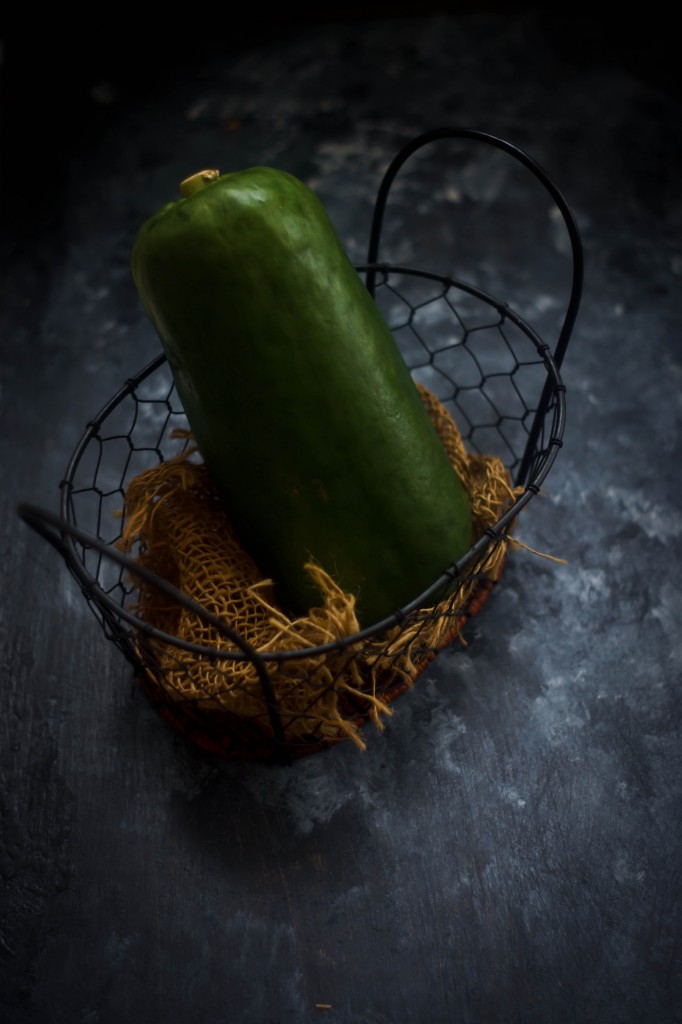
Papaya… the only fruit that I had totally loathed, except when it was in this chutney. Nothing could beat the bubbling pleasure I felt to know that this much disliked fruit could be turned to something so enticing and had in it’s ability to trick others too.
Green, unripe, papayas are a must for this recipe. Make sure they are fresh and tight…
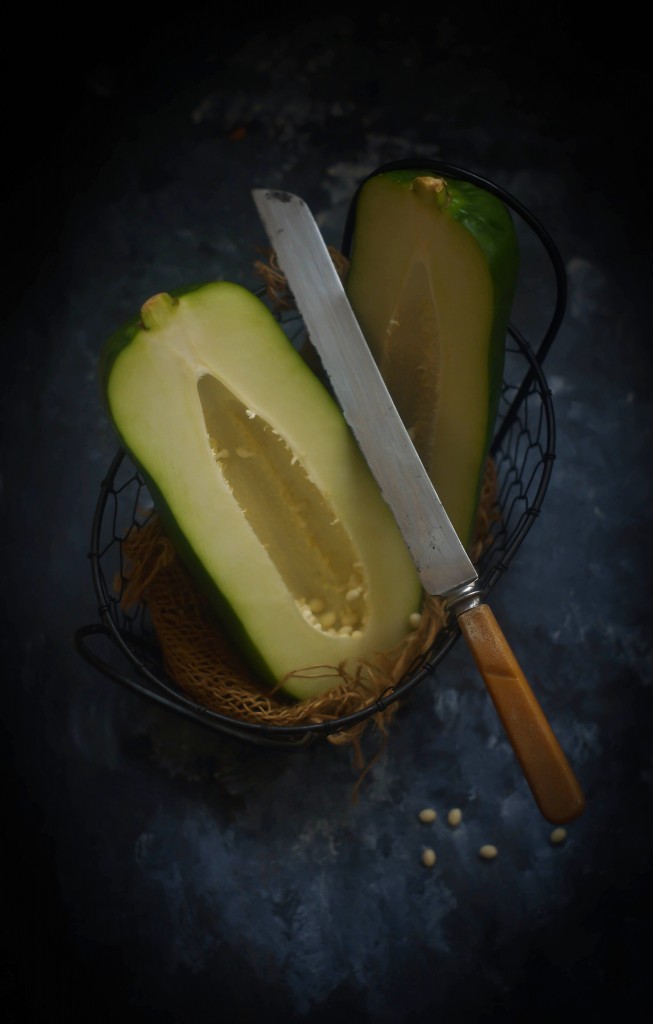
Besides the undisclosed papaya, there lurked a secret ingredient in this chutney, that was the little culprit of confusion, the spark of the surprise.
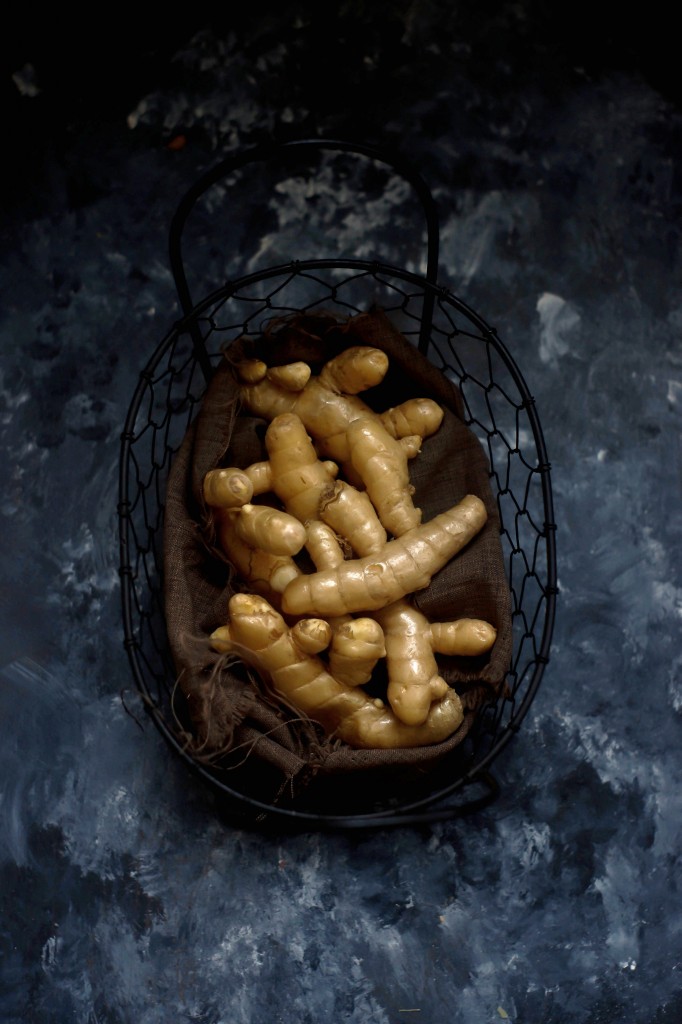
Mango-ginger or Aam Aada: a ginger like rhizome with aroma of green unripe mango grew in our front yard.
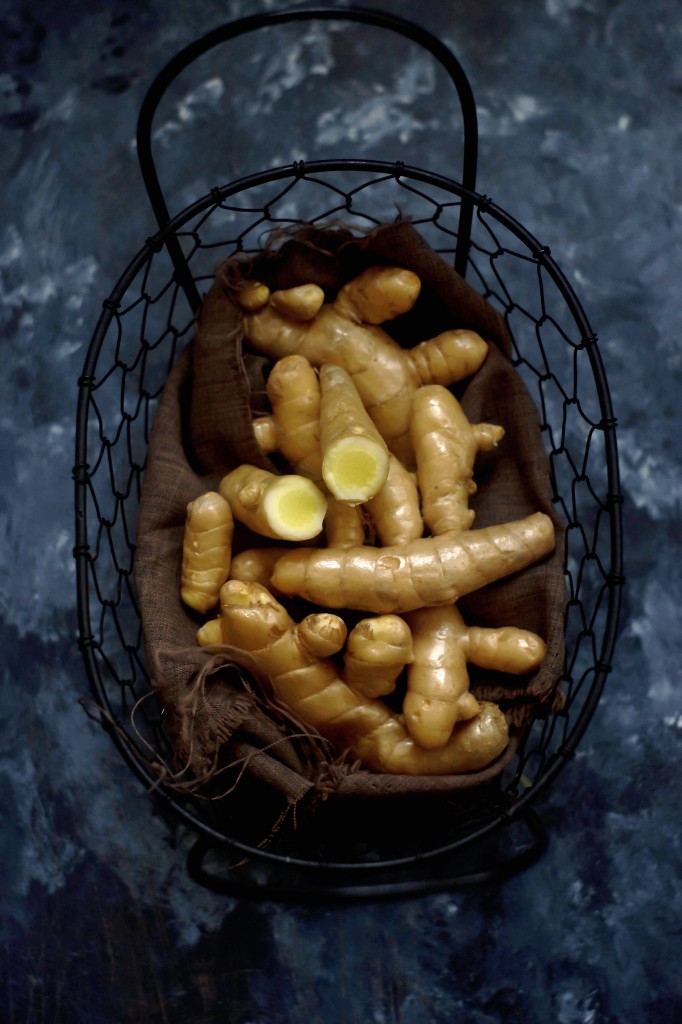
We grew up mostly eating seasonal fruits and vegetables, unless ma froze some peas or blanched tomatoes and packed them in the freezer for the summer months. We did not shop from supermarkets then, never knew what a frozen aisle could be. All I knew was open bazaars where local people came with their fresh produce everyday.
Aam er mukul or the mango bloom would have not even made the appearance in the winter months, let alone finding one unripe mango.
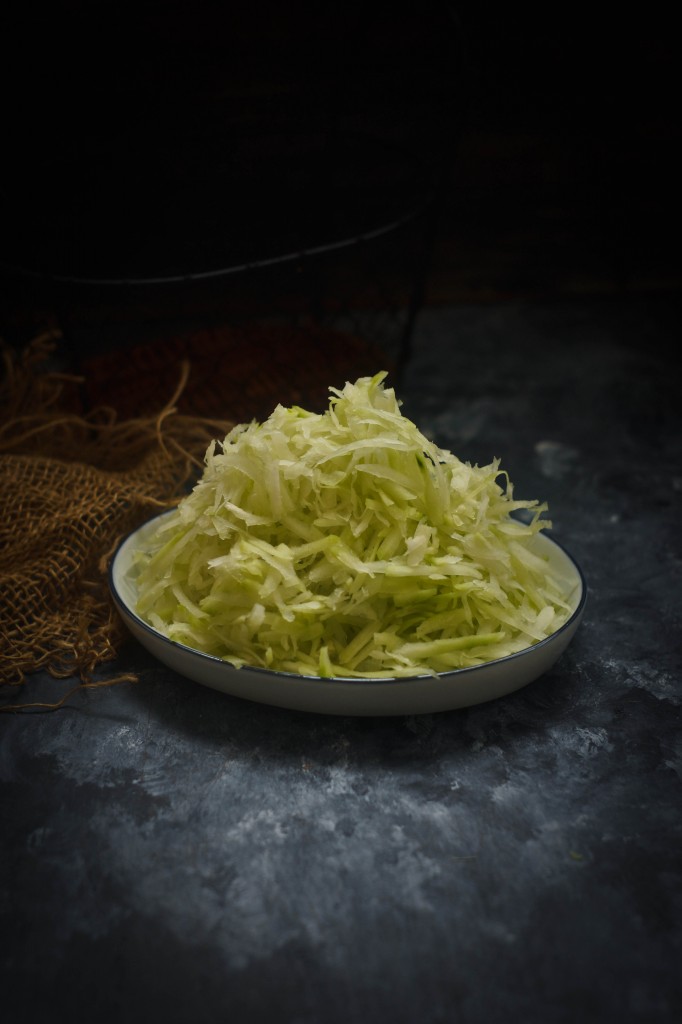
So the fact that our dear guests thought what they saw was a green mango chutney in front of them in the midst of winter would take them by immense surprise.
Always.
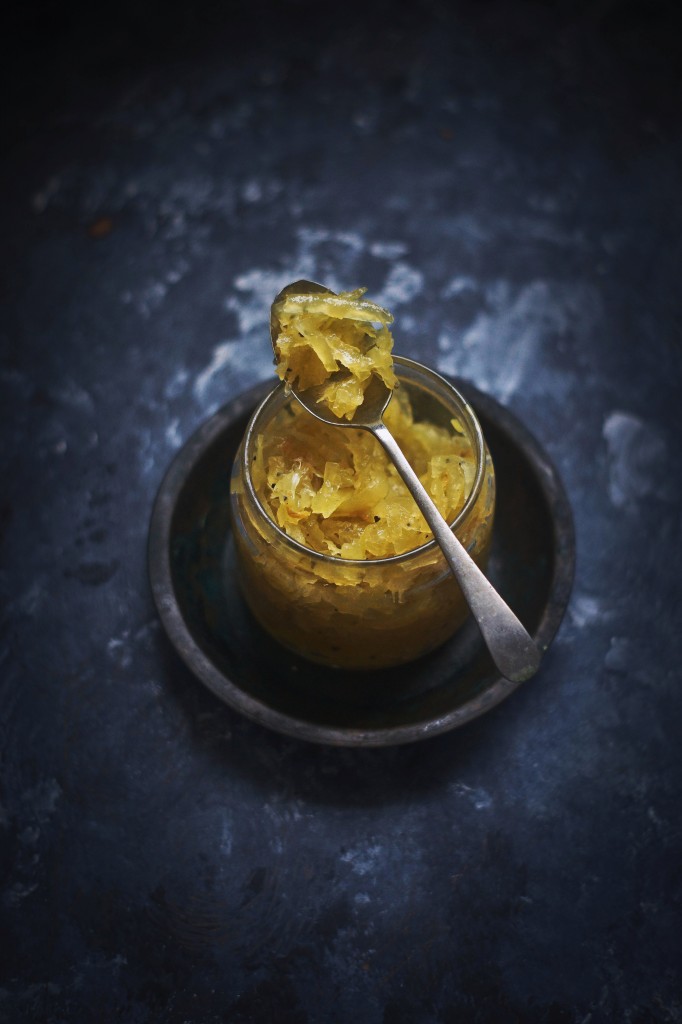
Papayas for the plastic chutney grew plenty in our home. Too many of them. The papaya plant stood by our dining room window and would bear fruits without a break, quite to my distress. The warm humid climate is perfect for this tropical fruit. The tall tree stood by itself, (as a constant reminder that there would be another ripe fruit to be harvested very soon…) and contributed to ripe papayas for breakfast for my parents, green papayas to be steamed and drizzled with mustard oil or for curries and the hollow stem of the papaya leaves with which I had learned to blow bubbles from my dida… We sat together with a big bowl of soap water in front of us and and we blew bubbles – with the gurgling sound went out hundreds of bubbles, first covering the soap water up to the rim of the bowl like a web, to where I could not see the water any more and then in to the air, as I lifted the stem and blew out, while the bubbles ran and flew unsteadily, catching the sunlight to have that rainbow shimmer… the memory of that light illuminates my life even now.
That one tree that I did not much care for, held many memories.
The mango ginger grew just a few feet away from the papaya, lining the edge of the concrete that lined our hand pump to draw water from the deep underground. I have carried the picture of my home and it is going to stay with me forever.
With the papaya and the mango ginger, both growing by each other in our yard, it seemed that they were just meant to be together.
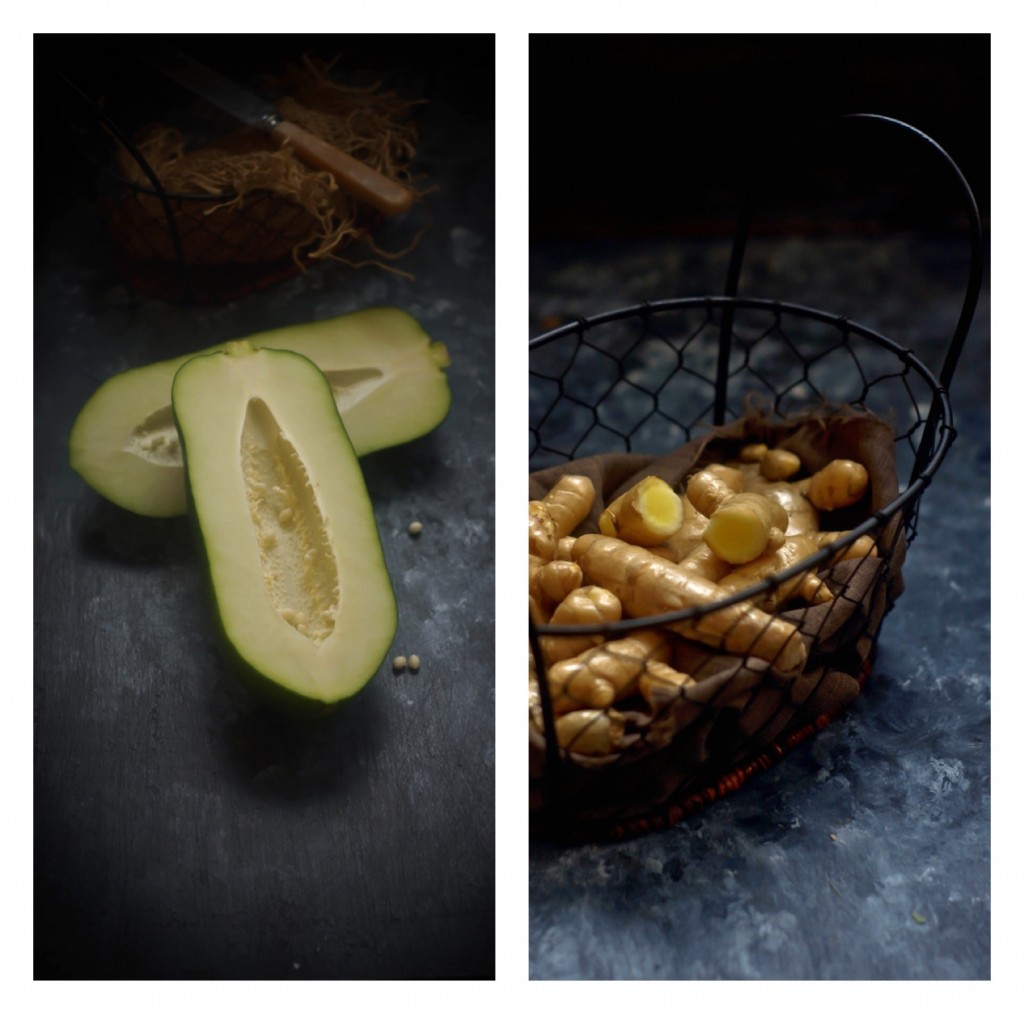
What always surprised everyone was the flavor. The flavor of mango in the cold of the winter. “Ei shomoye aam kothaye pele?” (Where did you find mango at this time of the year?) was something we heard a lot with this was served.
While a lot of people are familiar with the plastic chutney there have not been a single other place than my home that I have seen the addition of mango ginger in it. But that does not mean that it is not done that way anywhere else. I just haven’t encountered this combination anywhere else other than home. To me it is the Aam Ada, that added the magic touch, made it so different.
The green papaya once cooked through in the sugar syrup attains a texture like the grated green mango. The mango ginger or Aam Aaada adds the flavor of the green mango, making the chutney taste exactly like it is made with green mangoes, which are only available in spring and summer. When I now make it, we (especially A) find striking similarity with the Aam Murabba that his mom makes.
Bengali meals always end with something sweet, even if it is a tablespoon. The chutneys are the most popular end of the meal dishes. However I have found that this works as good as a jam or marmalade to have with toast or with cheese to serve with crackers. A recipe of a plastic chutney from the soil of Bengal finds its way miles away to be used in more ways than one.
Enjoy!
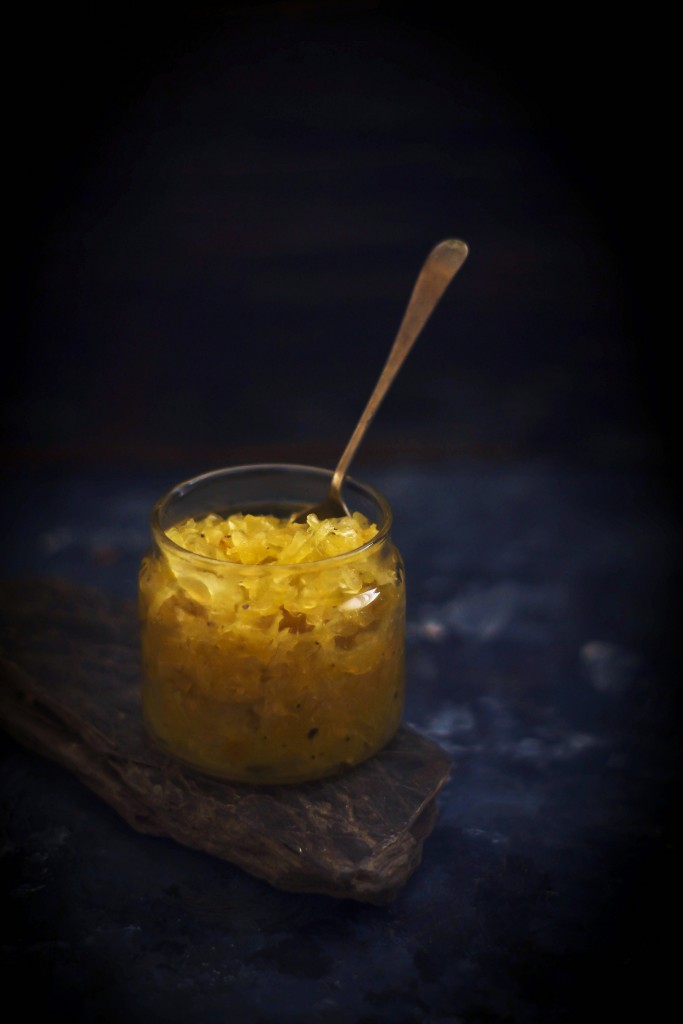
Papaya/Pepe – r Plastic Chutney
Ingredients: (makes about 1.5 cups)
- 1/2 of a 9-10 inch long unripe papaya (Green Papaya), about 3 cups shredded and packed
- approx. 2 cups water
- 1.5 cups sugar
- 1/2 teaspoon salt
- 1 – 1.5 teaspoons cardamom (seeds powdered), adjust taste to how strong a flavor you want
- raisins (optional)
- 3-4 tablespoon grated mango ginger (use more or less depending on how strong a flavor you would want)
- juice of one whole lemon + half a lemon, about 4-5 tablespoons (more or less to taste)
- a small pinch of turmeric, for the yellow color if you want (optional)
Method:
Slice papaya in half. Remove seeds if any. Peel and grate papaya and then wash in cold water and drain.
Peel and grate mango ginger and set aside.
Combine papaya and about 2 cups of water (more water maybe added later if required), salt, (and turmeric if you are using) and cook at low heat until the papaya is partially cooked. Add the rest of the ingredients. There should be still a good amount of water left. If not add more water, enough to dissolve the sugar.
Cook at low to medium heat until the papayas are softened but the strands will be separate. The sugar and lemon will make the papayas glazed and jelly like. Most of the liquid will have evaporated but there should be enough still coating the papaya and a bit more. It will further dry as it cools.
Remove from heat and set aside and let it cool. The cooking process should take about 40 minutes (but will vary depending on the amount of water added and the amount of water the papaya releases). Refrigerate once it is cooled. The chutney will be good for a couple of weeks.
Preparation Time: 15 minutes
Cooking Time: 45 min – 1 hour
Difficulty Level: Easy
Easy Serves/Makes: 1.5 cups
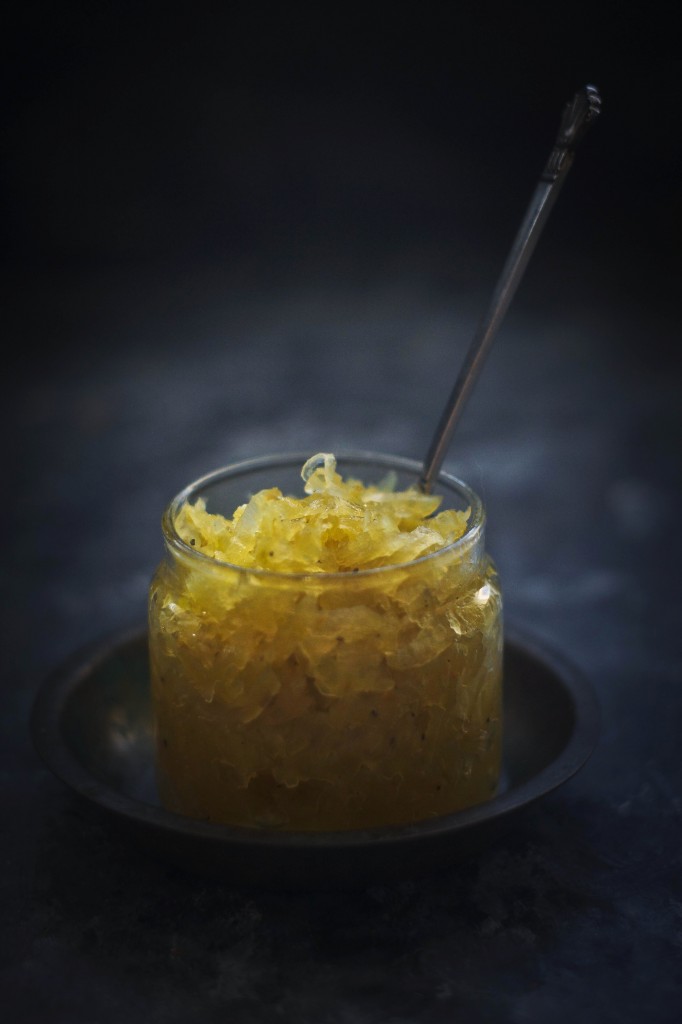
Related Posts:
- Sweet and Spicy Green Mango Chutney: Kancha Aamer Chutney
- Anarosher Chutney – Indian Spiced Pineapple Chutney
- Anarosher Chutney – Indian Spiced Pineapple Chutney
- Pineapple Cranberry Chutney
- Sweet & Spicy Fruit Chutney – Spread the Warmth
- Spiced Strawberry Chutney
- Apricot Jalapeno Chutney

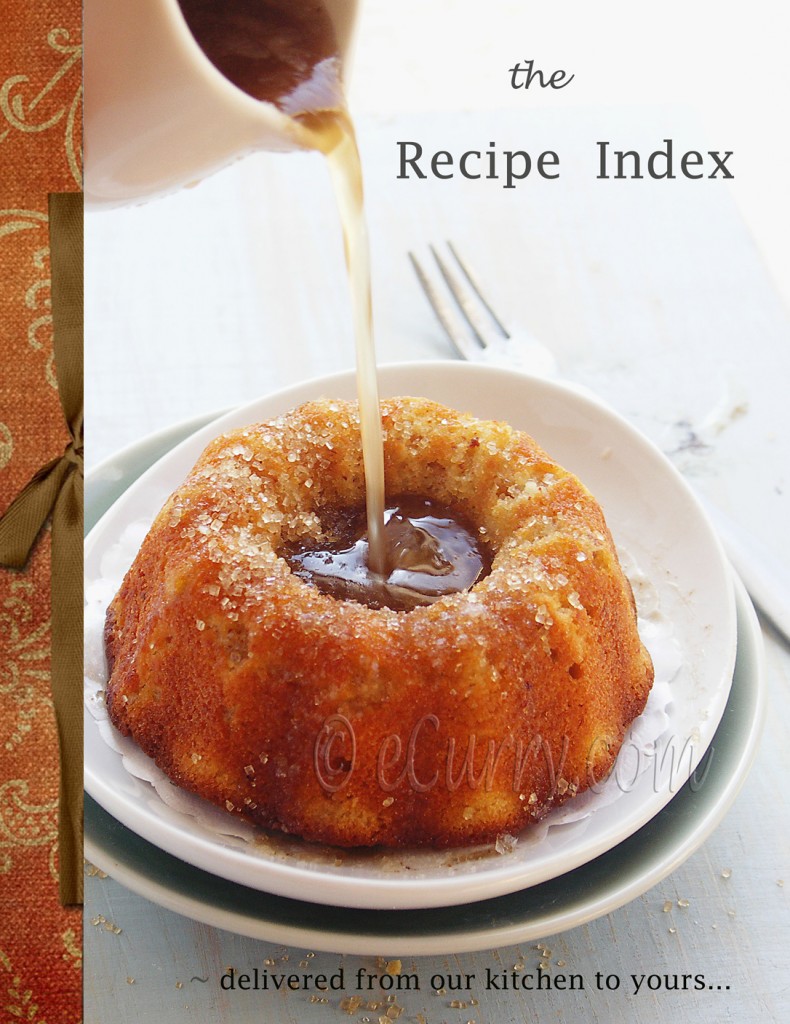
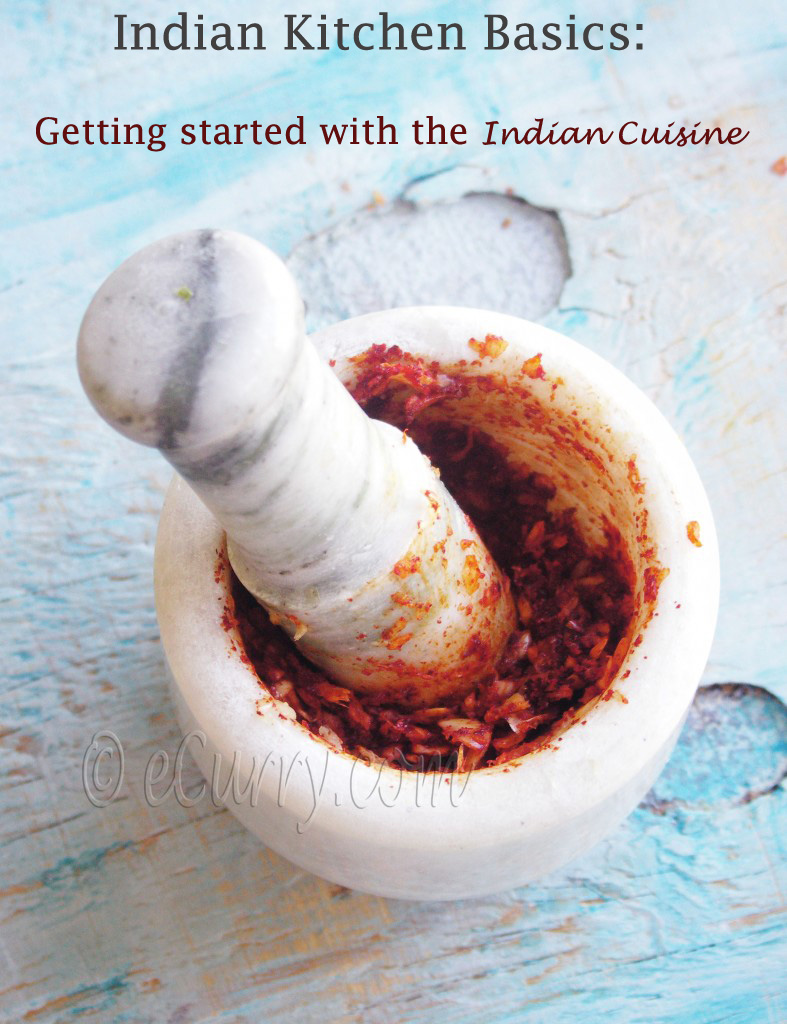
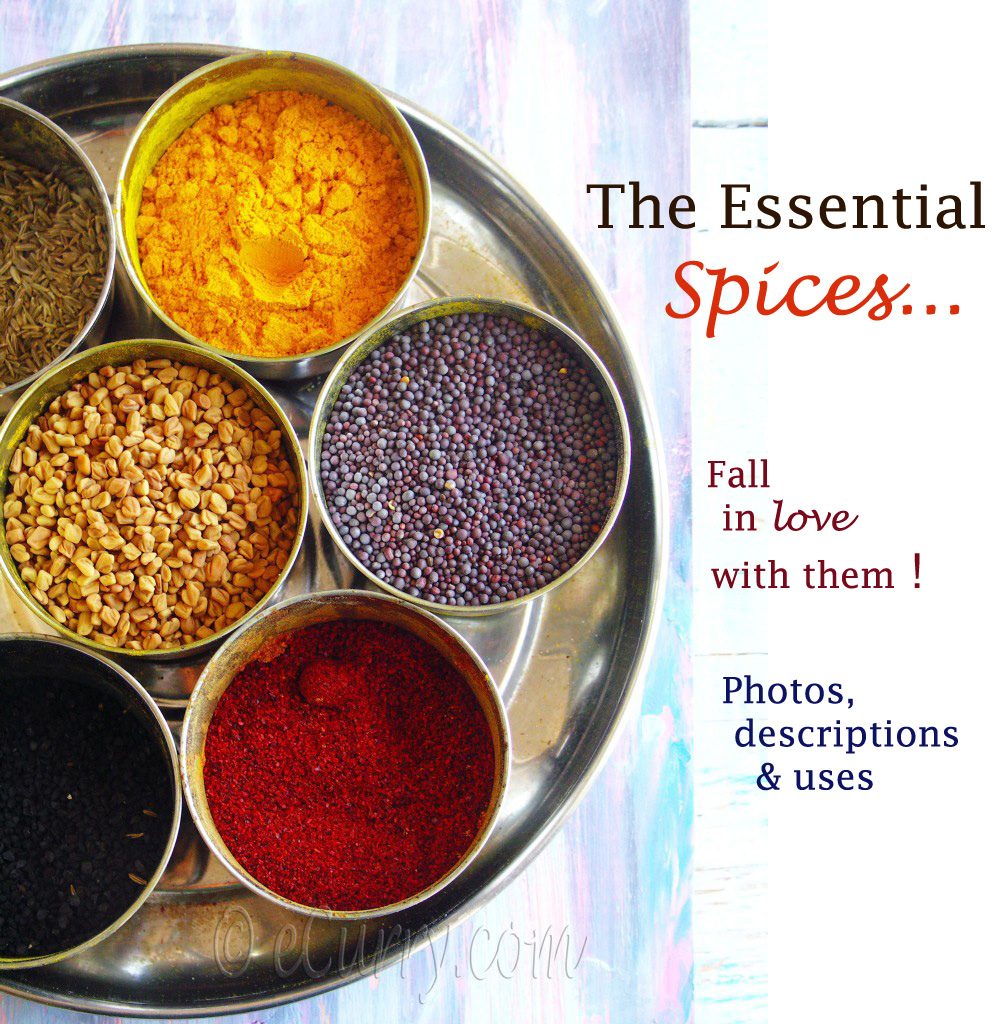








What a lovely post! Loved everything about it. Pictures as well as your words. Beautiful.
Nice to see you back and thank you for keeping this site up with your recipes! I’m finding some of my favorites for a cooking marathon tomorrow :))